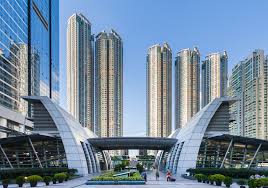Physical Address
304 North Cardinal St.
Dorchester Center, MA 02124
Physical Address
304 North Cardinal St.
Dorchester Center, MA 02124

Cities, for most of human history, were dumb. At least, that’s what the “smart cities” movement might lead you to believe. Over the past few years, a chorus of acquisitive multinational tech corporations, trend-savvy politicians, and optimistic developers—an odd mixture of former SimCity players, in all likelihood—has come to sing of technology’s potential to solve urban problems. Through implementation of technologies like augmented physical infrastructure, central command centers, and information exchange, proponents of smart cities argue that information technology offers new solutions to old problems like trash collection, public health, and traffic congestion. While the movement’s ideological variations are many and varied, a focus on top-down smart city solutions has ultimately distracted urban observers from the bottom-up smart city revolution that’s already underway. In his 2014 book Smart Cities: Big Data, Civic Hackers, and the Quest for a New Utopia, scholar Anthony M. Townsend paints a troubling picture of the former in Rio de Janeiro’s modestly titled Center for Intelligent Operations. Developed by IBM, the center acts as a hub for hundreds of surveillance cameras and sensors. At best, the center achieves little more than, in Townsend’s words, “looking smart.” At worst, the center seems to be a regression back to twentieth century centralization. Townsend’s explorations of Songdo, South Korea, a city purported to be both centrally-planned and smart, hardly quells these concerns. The discussion leaves the reader with a healthy skepticism of top-down smart city solutions. Other criticisms have made the top-down smart city feel less like something out of 1984 and more like something out of Terry Gilliam’s Brazil. In a couple of recent posts, Emily points out the roadblocks presented by poor incentives and a lack of market signals, both for politicians and high-ranking public servants. For similar reasons, both parties lack the incentives to implement […]
Public transportation service provision is changing. As I already have mentioned in this post at Caos Planejado, microtransit services are growing in many cities around the world and one of the forefront companies on this field is Bridj, operating in Boston since June 2014 and Washington DC since May 2015. I had the opportunity to interview David Block-Schachter, Chief Scientist of Bridj at Bridj’s office in Boston last October. Check it out: Marcos Paulo Schlickmann: Could you tell a little about yourself and your inspiration to work in this field? David Block-Schachter: About 8 years after finishing my bachelor’s I went back to school to do a PhD in transportation at MIT. After the PhD I worked for the MBTA as their Director of Research and Analysis to understand how they can use their data to improve operations. After that I joined Bridj. We wanted to improve mass transit generally, and looked at the issues here in Boston as our first focus. And obviously my background helped too. We also looked at informal transit systems all around the world. When I went to Rio I noticed how the buses are at a disadvantage, because the traffic itself is so unreliable that if you have a car you would prefer to be stuck on traffic in your car than in the bus. So we asked ourselves: “How can we use technology to combine the direct service associated with small vehicles with the good level of service we see in mass transit systems in America and Europe without inheriting the defaults and drawbacks of each system?” And the main advantage of direct trips instead of changing vehicles can be addressed by technology. MPS: As we see on the map depicting Bridj’s service areas, the company runs buses in 3 main areas with two main lines: Allston/Coolidge […]

Integrating rail and property development is the cornerstone of the MTR’s success. In the U.S., coordination between transit authorities and developers tends to be mediocre at best. In Hong Kong, however, the MTR is both the transit authority as well as the property owner, and this makes all the difference. Coordination Problem Most attempts at transit-oriented development in the U.S. involve multi-party negotiations. The agency responsible for the transportation system haggles with different developers interested in undertaking projects along the line. Instead of implementing a unified plan, the transit agency has to negotiate specific agreements with each developer. And, because the priorities of the transit agency and the developers are never perfectly aligned, development agreements become subject to second-best compromises. Further, any disputes that arise once significant capital has been committed are costly to resolve. This arrangement makes leveraging land values difficult as well. Developers frequently get tax breaks as an incentive to undertake projects. Whether abatements on property tax or straight-forward rate reductions, tax incentives typically preclude the use of land values to help fund transit. And, even without special incentives, major property owners who stand to benefit from proximity to a transit system have every reason to resist tax increases of any kind if there’s a chance of free-riding. The MTR, on the other hand, uses the integrated rail-property development approach which combines the two roles of landlord and transit developer. The MTR owns the right-of-way as well as the surrounding properties. This removes the necessity of extended negotiations, having to settle for second best solutions, and the potential downside of disagreements partway through a project. By combining the functions of landlord and transit developer, the MTR is also able to internalize land values. The rail line drives up the value of the MTR’s properties and that value covers […]

Need to get 4 million people to the office every day? Hong Kong has you covered. The Mass Transit Railway (MTR) is a rail system in the city of Hong Kong, currently managed by the Mass Transit Railway Corporation Limited (MTRL). The system opened in 1979 and now operates over 135 miles of track as well as more than 152 stations in Hong Kong. The average trip costs somewhere between .50 cents and $3 USD, and the system makes back 186% of its operational costs on fares alone. Much of the system’s success can be attributed to urban density. Denser development means people live, work, and play in smaller geographic areas, meaning that more people are travelling between a fewer number of points. This is a huge plus for a fixed-route system like a railway. The MTR, however, hasn’t been a passive beneficiary of its environment. The MTR owns real estate around each station in the system and integrates rail and property planning so that the development of one supports the development of the other. Construction around each MTR station is incredibly dense, so it can put as many potential riders as close to a station as possible. Over 41% of the population in Hong Kong (2.78 million people) lives within a half-mile of a station. Additionally, the company’s real estate strategy emphasizes walkability; some residents of MTR owned properties can walk from their homes to a station entrance without ever even going outdoors. Clustering potential riders around each station–and making sure passengers have an easy time getting there–helps support high levels of ridership. While fares cover the costs of operations, it’s really property development that pays for maintenance and expansion. The rail line, in turn, increases the property values of parcels adjacent to each station. This augments the land […]
Apparently I’m not the only one who thinks London’s Shard skyscraper (shameless article-I-wrote-about-London-skyscrapers plug) looks like Pyongyang’s Ryugyong Hotel. Koryo Tours, the only tour group that offers westerners package to North Korea, plays up the similarities on its blog: To the eyes of us all at Koryo Tours it looks like Renzo Piano has been copying Pyongyang… (Note the following is not 100% accurate – but close!…
There’s been a lot of handwringing by American lefties over the austerity plans that Germany is asking indebted eurozone governments like Italy and Greece to implement in exchange for bailouts, but many aspects of the plans – especially labor market deregulation – are long overdue no matter which side if the aisle you sit on (in the US, at least). In searching for information on the deregulatory aspects of Prime Minister Mario Monti’s “Save Italy” austerity plan, I came upon this interesting bit on transport deregulation in Corriere della Sera. I’ve never actually studied or spoken Italian, but hopefully this is a workable translation, if a bit literal: The recipe that the Antitrust Authority has chosen for taxi liberalization will double the number of licenses, but with each driver receiving a second one as compensation….
Scrapping viaducts like this would make California HSR cheaper, faster to build, and easier to maintain, without a loss in quality The recent peer review report recommending that California delay construction on the first segment of its high-speed rail project has caused a bit of consternation in the transit twittosphere. Blogger The Overhead Wire wrote, “Sorry, but defunding HSR won’t make local agencies $10b richer.” I replied, “But it might start a long-overdo convo on costs,” and he responded (and many agreed): “and then nothing will get done in my lifetime and costs won’t matter….
Earlier today Urban Photo Blog tweeted earlier today a link to an article about Hong Kong’s latest land reclamation project, with an obviously sarcastic “because it worked so well in Dubai!” tacked on at the end. Not to pick on Urban Photo Blog – actually, his Twitter account is definitely one of the best I follow – but I think that some of boomtime Dubai’s real estate projects, among them the infamous Palm Islands, give land reclamation a bad rap. …
Are America's private railroading glory days gone forever? The folks at Freakonomics have asked me to contribute to a “Quorum” on Amtrak and whether it can ever be profitable. Maybe I was a sucker, but it looks like I hewed closer to the question that some of the other contributors….
Enormous viaducts like this are one reason for the project's ballooning cost estimates Well, the other shoe has finally dropped: the California High-Speed Rail Peer Review Group is recommending that the state legislature not authorize the issue of $2.7 billion in bonds to begin paying for the state’s planned $98.5 billion high-speed rail line….